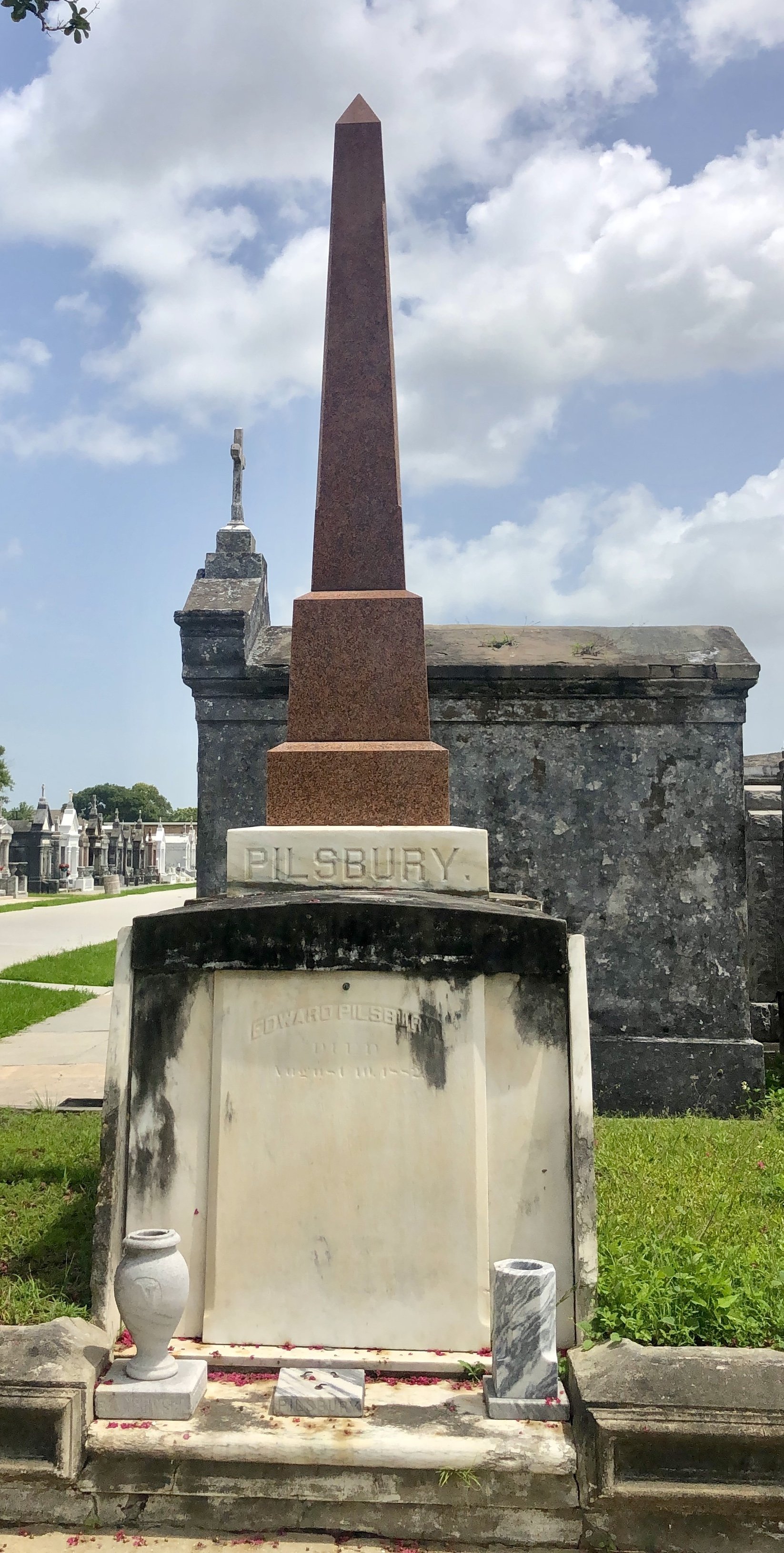Egyptian Architecture in New Orleans’ Cemeteries: Part One
The Langles Obelisk in Metairie Cemetery has an intriguing history!
Obelisks in cemeteries are curious and seemingly simple designs, but are steeped in history. Obelisks were first seen in Egypt around 2650-2134 B.C. These tall, tapering pillars were often placed in front of Egyptian temples as either gifts to the gods or to commemorate important events. They were a symbol of the sun-god Ra, representing a ray of sun which gets broader as it reaches Earth, hence the tapering shape of the monument. An obelisk is demonstrative of the strength of sunbeams and of immortal power.
The DeVilla Obelisk in St. Louis Cemetery #3 sits on a Gothicized Pedestal. The inscription in Italian means “to the pleasant memory.”
In the 19th century, Egyptian Revival architecture became popular in the United States. This trend was known as Egyptomania. The most famous obelisk is probably the Washington Monument in Washington, D.C., standing a record 555 feet 5+1⁄8 inches.
The Bowman Obelisk in Metairie Cemetery.
Obelisks have been associated with commemoration and can vary in scale and be combined with other structures and architectural styles. New Orleans cemeteries have many of their own obelisks - some with some amazing stories attached!
The Pilsbury Obelisk in St. Louis Cemetery #3 is made from red granite.
If you would like to learn more about these obelisks and other unusual tombs in New Orleans, I would be happy to give you a tour.




